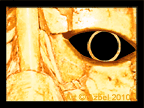Image: Vessel with Snake-Lady Scene, Mexico or Guatemala, Southern Campehe or Northern Peten region, Maya,
AD 600-800, Slip-painted ceramic, anoymous gift
Much of the current popular interest in ancient Maya civilization centers on the calendar. But most of the calendric records we have are from centuries after the calendar’s invention. This presentation by Gerardo Aldana, Professor of Chicana/o studies and Anthropology at The University of California, Santa Barbara, explores the origins of the Maya Long Count, avoiding interpretations that rely on mystery or surprisingly advanced technologies. Instead, we will see the calendar as an astronomically inspired tool that was useful politically and culturally for the establishment and stability of early Preclassic communities.
Brown Auditorium | Free, tickets required | Tickets available at Ticket Office one hour before the start of the event
Saturday, February 16, 2013 | 1 pm
AD 600-800, Slip-painted ceramic, anoymous gift
Observatories and Green Stones: Exploring the Origins of the Maya Calendar
Much of the current popular interest in ancient Maya civilization centers on the calendar. But most of the calendric records we have are from centuries after the calendar’s invention. This presentation by Gerardo Aldana, Professor of Chicana/o studies and Anthropology at The University of California, Santa Barbara, explores the origins of the Maya Long Count, avoiding interpretations that rely on mystery or surprisingly advanced technologies. Instead, we will see the calendar as an astronomically inspired tool that was useful politically and culturally for the establishment and stability of early Preclassic communities.
Brown Auditorium | Free, tickets required | Tickets available at Ticket Office one hour before the start of the event
Saturday, February 16, 2013 | 1 pm



















































































































































































































0 comments:
Publicar un comentario